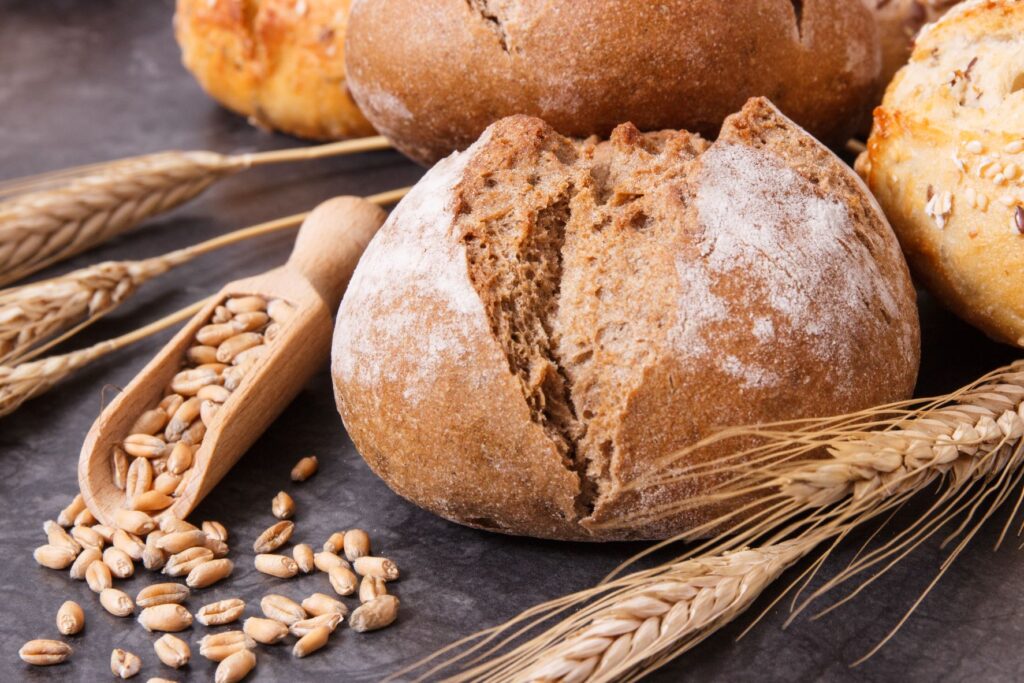
The last two generations have been enough to lose millennia of knowledge about our food. Cereals have also fallen into disrepute in recent years. Since the average person, in this age of lack of time or even ignorance, resorts to ready-made baked goods and extract flours, nutritionists who warn against grains are not necessarily wrong. However, it is not the grain itself but the industrial processing and the one-sided and excessive consumption of low-quality wheat products that damages our intestines and thus our health.
Among most of the traditionally living peoples Weston Price visited, grain represented an important staple food. In Switzerland, for example, a lot of rye bread was eaten, and in the Outer Hebrides, plenty of oats. Barley porridge (a now almost forgotten cereal grain) was part of the daily diet in many cultures.
There are many more cereal varieties than the well-known wheat, rye and spelt. Primal gra ins differ not only in color and taste, but also in the range of nutrients and baking properties. They are not yet genetically modified as much as today’s“high performance“wheat and are naturally more robust and resistant to weather, predators and mold. That is why it is easier for farmers here to avoid the use of pesticides. But they are not as profitable, which in turn is also reflected in the higher price. People who react to modern wheat often tolerate old varieties or spelt better. Even though the gluten content tends to be higher than that of high-performance wheat, the structure is simpler.
You can now find ancient grains in almost every health food store and somewhat cheaper and in larger quantities also on the Internet. Emmer and Khorasan wheat (Kamut), for example, are wonderfully suitable for pasta, because they can be processed into semolina and are ancestors of durum wheat. Each grain has a unique taste. Forest rye and red grain, for example, are very good for rustic breads, Einkorn is perfect for cakes and toast, and with yellow wheat you get a delicious yellow waffle batter, Once you start baking with ancient cereals, you will not want to miss it.
Weston Price
was able to observe among isolated peoples that they always milled their grain fresh immediately before preparing the dough. They seem to have known that flour should not be milled for stock. He got to the bottom of the matter and found that the germ containing vitamin E is no longer detectable in milled flours after just one week of storage. In the same time in the cities and villages of Central Europe the profession of grain miller was already established, stocks of milled grain became established. However, diseases of civilization, caries and malocclusions were significantly more common here than among isolated peoples.
When freshly milled flour is stored, it is not only the germ, which contains vitamin E, that suffers. Investigations
showed that hardly any nutrients could be found in it after only two weeks. Natural flavors evaporate and dietary fiber reduces its swelling capacity, which now can no longer develop its positive influence on digestion. The longer the flour is stored, the greater this loss in value. The grain itself will last for many years if stored in a dry and cool place. However, as soon as it is ground and comes into contact with oxygen and light, the oxidation process begins. Nutrients are lost and the fatty seedling becomes rancid over time. Nowadays, in order to extend the shelf life of extraction flours, the food industry removes the fat-containing germ. In order to produce light, airy grain products that are as light as possible, the marginal layers of the grain (the hull) are often also removed.
The cereal seedling contains not only abundant
are in the seedling. In his educational work, Dr. Bruker repeatedly emphasized how important vitamin B1 is for carbohydrate metabolism. Only if this is contained in the grain product, we remain slim and healthy despite the starch in the grain. We need the whole, whole natural product to be able to metabolize it properly. If we take away a part, this process no longer works.
Address:
Gasteigweg 25,
5400 Hallein
Austria
Opening hours:
Monday to Thursday: 09 – 16:00
Friday: 09 – 12:00
Contact:
Phone: +43 6245 83282
E-mail: info@agrisan.at
Address:
Gasteigweg 25,
5400 Hallein
Austria
Opening hours:
Monday to Thursday: 09 – 16:00
Friday: 09 – 12:00
Contact:
Phone: +43 6245 83282
E-mail: info@agrisan.at

